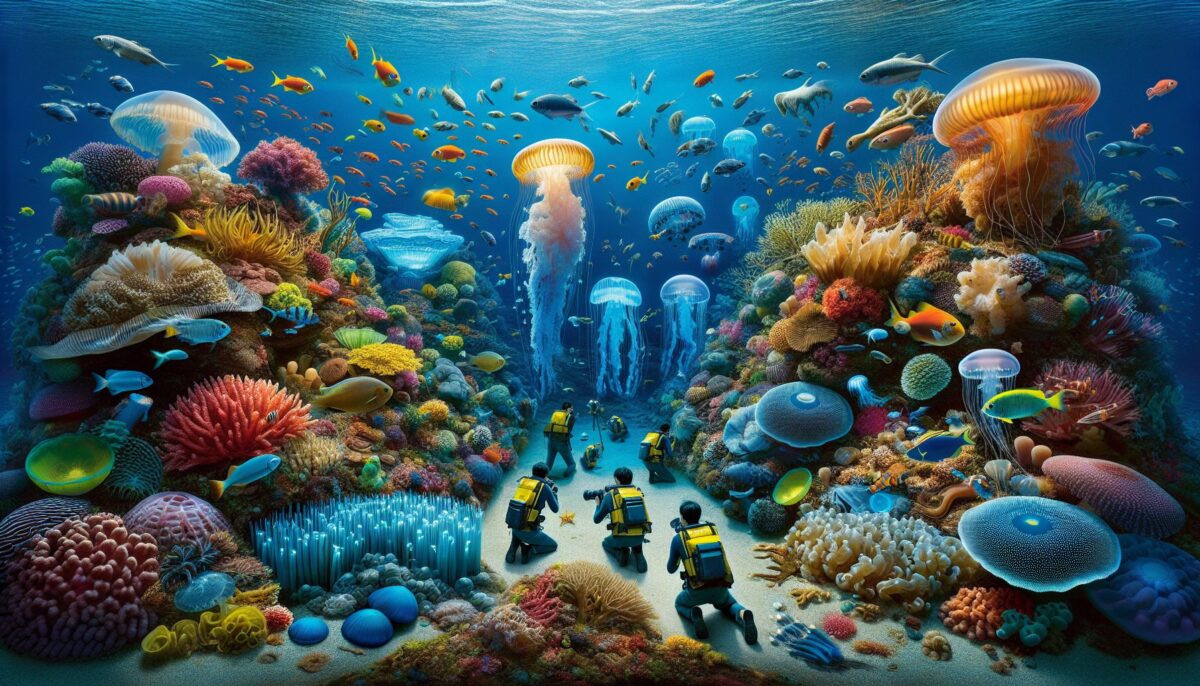The vast expanse of the earth’s oceans, covering approximately 71% of our planet’s surface, are brimming with a spectacular array of life forms. A variety of factors account for this: the ocean’s sheer mass and depth, coupled with its complex topography, and the myriad of unique interspecies interactions which characterize each regional ecosystem. The natural diversity displayed by the marine world is a topic of growing interest and critical importance. To gain a deeper understanding of sea life’s marvels, this article delves into the fascinating subject of Marine Biodiversity.
The Ocean: An Abode of Life
Although the ocean is one immense body of water, it’s not just a uniform dwelling; instead, it is segmented into various zones. Each ocean zone bears a unique community of organisms, suited to their particular environmental conditions. The National Oceanic and Atmospheric Administration (NOAA), in their articles, explores the different zones of the ocean and the types of marine life inhabiting them.
Species Richness in Marine Ecosystems
The term biodiversity embodies three concepts – species diversity, genetic diversity, and ecosystem diversity. In relation to the ocean, it signifies the vast range of marine organisms – from microscopic phytoplankton to the enormous blue whale. This diversity is immense; according to Fisheries and Oceans Canada, it is estimated that the number of marine species could be anywhere from 500,000 to over 2 million.
One of the most iconic representatives of marine biodiversity is the coral reef ecosystem. Often referred to as ‘rainforests of the sea,’ coral reefs host an enormous array of species. The Coral Reef Alliance indicates that though coral reefs occupy less than 0.1% of the world’s ocean area, they offer a home to at least 25% of all marine species.
The Importance of Marine Biodiversity
Marine biodiversity plays an integral role in maintaining the overall health of the planet. It supports the functioning of ecosystems, provides food, aids in climate regulation, and offers potential sources for pharmaceuticals. Furthermore, the thrill of exploring marine life can drive tourism and offer recreation to many. The World Wildlife Fund (WWF) discusses the crucial role of biodiversity in marine ecosystems in detail.
Threats to Marine Biodiversity
Despite the profound importance of marine biodiversity, it is currently under formidable threat. Major concerns include overfishing, climate change and ocean acidification, habitat loss, pollution, and invasive species. United Nations Environment Programme (UNEP) provides a comprehensive overview of the threats to marine biodiversity.
Preserving Marine Biodiversity
Addressing the threats to marine biodiversity necessitates comprehensive and sustained efforts. From creating marine protected areas, managing fisheries, combating climate change, reducing pollution to promoting sustainable tourism – all these strategies can contribute to the conservation of marine biodiversity. The Ocean Conservancy provides more information about marine conservation efforts.
Celebrating marine biodiversity calls for acknowledging its importance, understanding the dangers it faces, and striving to ensure its continued survival. Let’s explore the depths of the seas, for they are a rich tapestry of life, whose threads are interwoven in intricate and awe-inspiring patterns. And let’s pledge to do more than just explore; let’s aim to understand, value, and preserve this incredible aspect of our marvelous planet.
